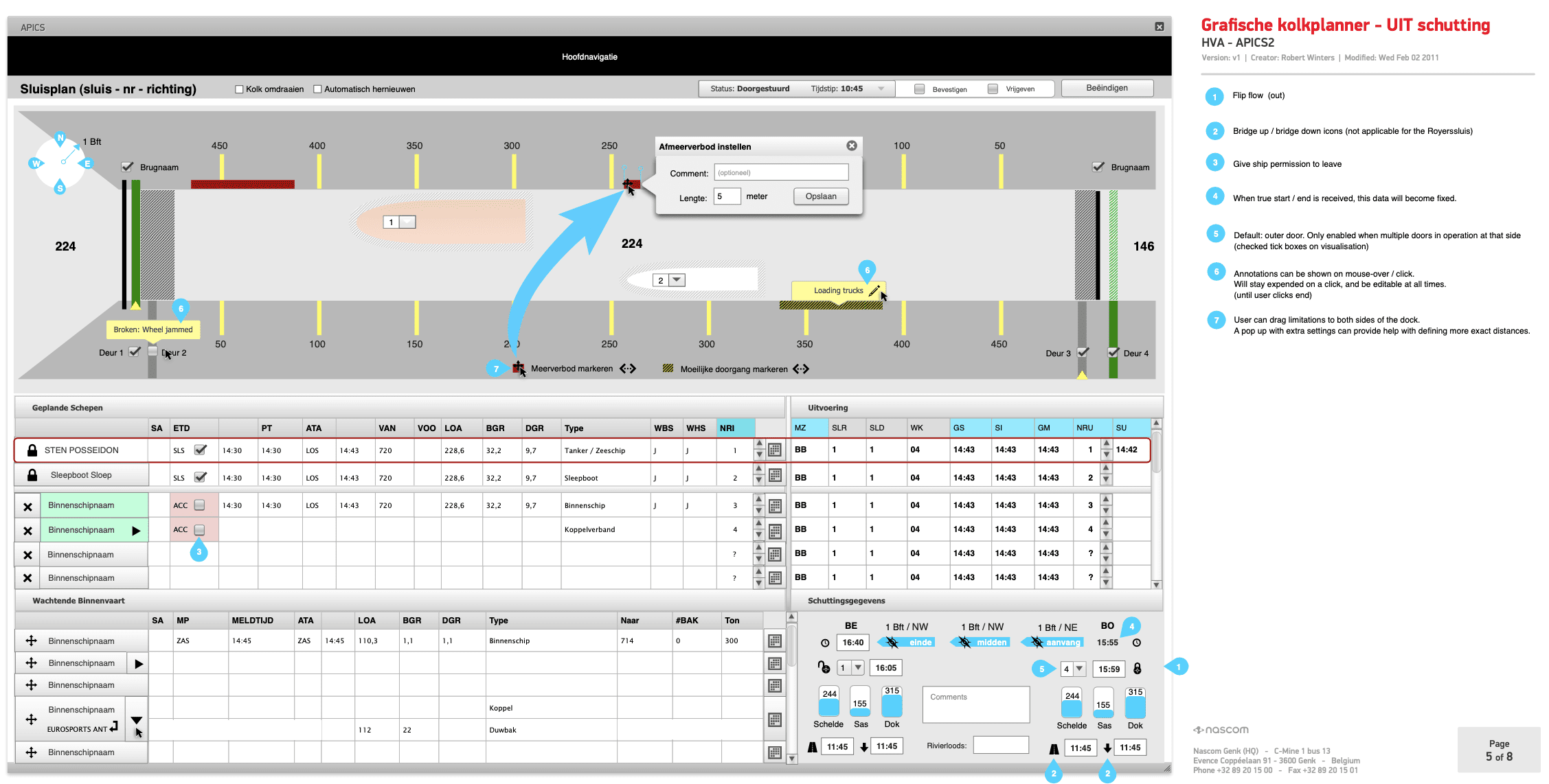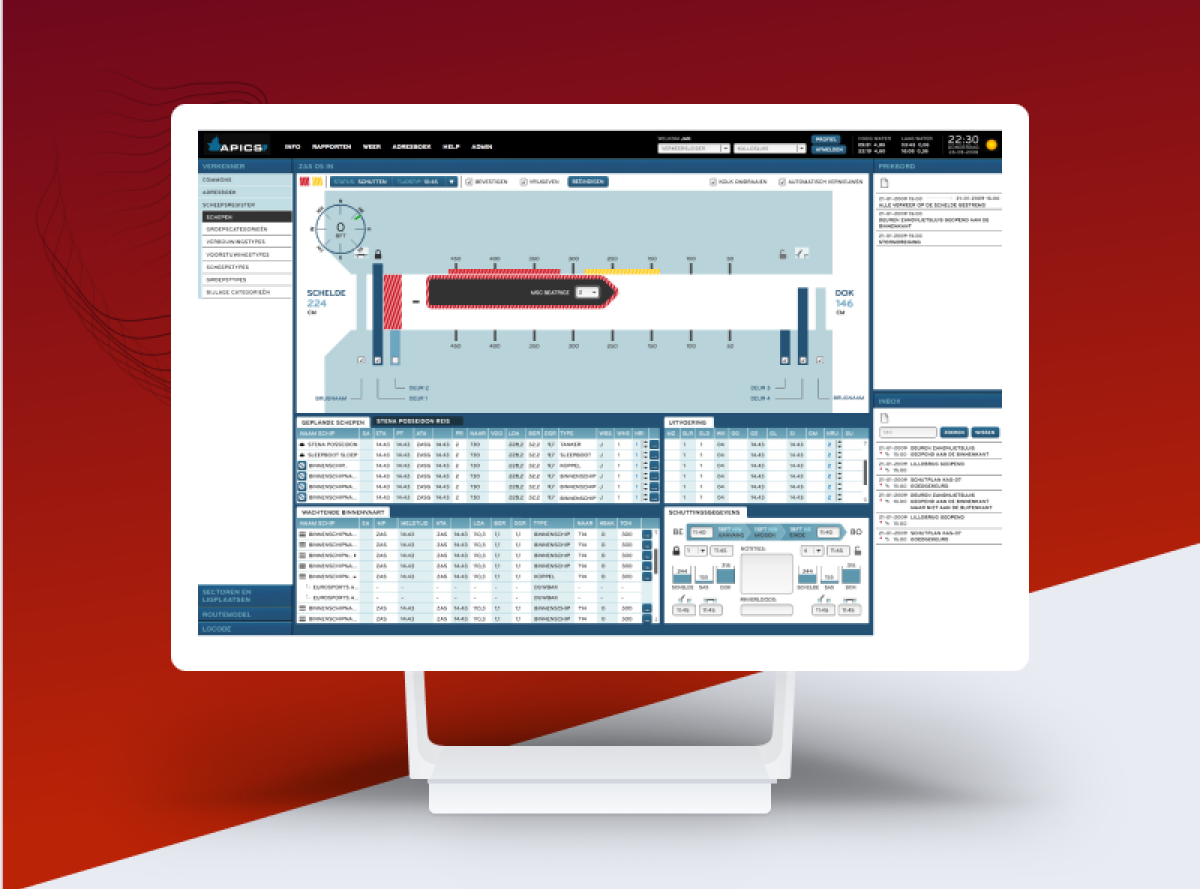
APICS is the abbreviation for the Antwerp Port Information and Control System. This software platform is the heart of all maritime traffic around the city of Antwerp.
Over the years - while employed at an agency called Nascom - I worked on various modules and services to improve APICS.
Two of the more critical modules I was responsible for were the reporting of dangerous goods and the lock scheduling system.
In this case study we will zoom in on the lock scheduling system.
400 staff members are now working with APICS, 24/7 - a day with great satisfaction!

The port of Antwerp has a lot of traffic and multiple locks that can only hold so many ships each time they operate. Careful scheduling is required.
Design and develop a GUI that visualises all ships in the locks and assign priority on lock entry and departure. Also display weather and water levels.
Worked for 2,5 weeks full time on conducting field research & designing multiple versions of the wireframes. The final visual design was created by Nascom’s art director.
400 staff members work & plan ships 24/7 with the proposed solution. They consider it as a massive step forward in their daily workflow.
I started with interviewing harbormasters, lock planners and tugboat operators. Their jobs proved interesting, but ridden with dated software. Some of their tools had no GUI yet and were still command line based.
After the interviews I visited multiple sites for a field study.
The first versions of my wireframes were focused on usability and clarity. I tried to visualize only information that was needed in the moment and hide other information in options and menu’s.


However during the first workshop with users, there was significant push back to this approach. Users clearly voiced their desire for having as much information visible as possible.
The final version was challenging, as it had to strike a balance between avoiding “information overload”, being comprehensible without too much training and providing a clear view on the current lock planning situation.
After finding that balance and finalizing the wireframes, I installed myself next to the desk of Nascom’s art director at the time. He started working on the visual design which had to integrate in the existing APICS platform.
Since the application was going to be used day and night, we also included a dark mode which was more easy on the eyes during the night.
The final product was developed by the in-house APICS development team.
Fun side note: 1 of the UI's button called in helicopter support. 🚁

